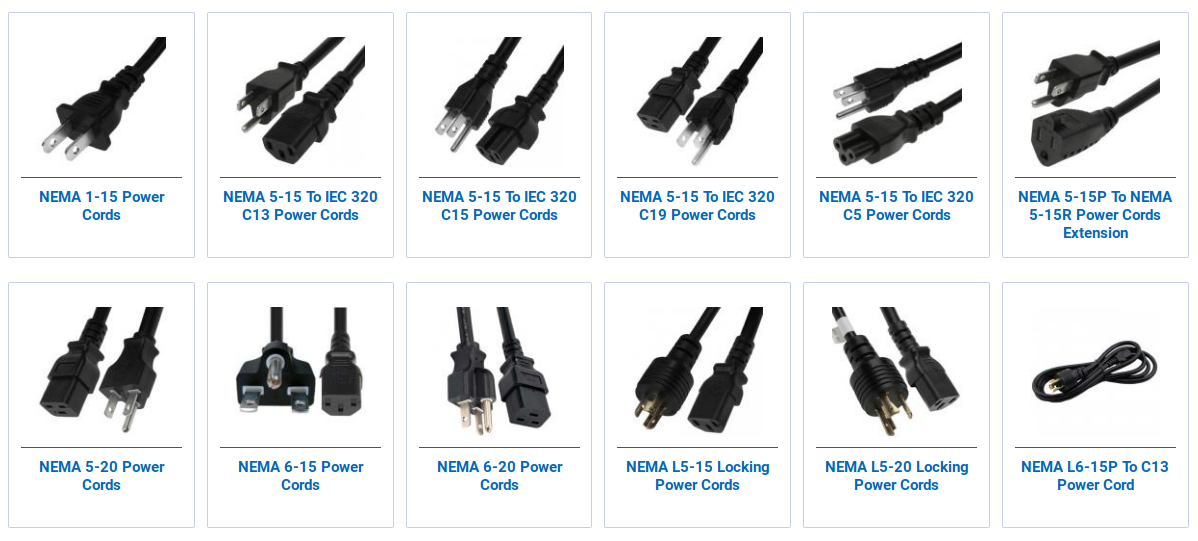How to Manage Power Cords Efficiently?
Ever had a chance to visit a server room or data centers? If you did, you must have come across several electronic cords including NEMA power cords and other computer paraphernalia. Apparently, you would be overwhelmed and confused by the variety of power cords having different reptacles and plugs. Also, the application of all these cords differs for different purposes they serve.
Through today's article, we will help you to manage your power cords with efficiency. But before we do that, let's get an understanding of different power cords and their working:
So, What's a Power Cord?
So, What's a Power Cord?
Also known as mains cable or inline cable, power cords help to connect a portable electronic equipment with the supply line of electricity. It is an insulated and flexible conductor with one female and one male connector attached at both ends. If you visit North America, you will find a lot of NEMA power cords that are built according to the standards set by National Electrical Manufacturers Association.
Now let us look into power cords with different connector types and try to understand their appearance as well as applications:

C14 To NEMA 5-15 Power Cords
5-15 and 5-20 are the most popular and commonly used NEMA connectors. The first digit of these standards depicts the configuration of the plug and the second one indicates the amp rating of these equipment. C14 to NEMA 5-15 power cords are used for connecting monitors and other computer equipment. Several online firms based in the USA sell these cords at cost-effective rates.
IEC 60320 Power Cord
IEC stands for International Electrotechnical Commission. It is a body that publishes international standards - that is IEC 60320 for power cords. When you are around PCs and monitors, it is quite likely that you will come across IEC 60320 C13 to C14 power cords. They have the rating of 10amps with a C13 female connector and C14 male connector. The C10 and 20 connectors are used for devices like UPS systems and servers.
Now, take a look at some of the ways to manage this within your racks:
Keep the Power and Data Cables Separately
Electromagnetic interferences can affect the performance of your NEMA power cables. Hence, it is advisable to separate fiber optic cables and fiber optic cables. It lessens the effects of EMI, curbs the issues occurring out of human errors and protects your cords from erratic and error prone data transfer. In case you need to cross power and data cables, choose to place them perpendicular to each other so that you can control the amount of EMI. Also, you can choose to stack the data cables on the rear side of the IT rack.
Go for Colored Power Cords
Choosing colored power cords helps you to administer and identify it. Not just that, it also makes it easy for you to manage all the devices that are inside the rack. When you use cords of different colors, you would be able to bifurcate and identify the power paths of each of these cords and enable systematic installations by making your server room neat and tidy. Whether you are looking for NEMA or C14 To NEMA 5-15 Power Cords, they are easily available in different colors through the companies that sell electronic accessories online.
Label Them
During the installation of different devices and testing them, it becomes imperative to label both ends of the power cord. When you do that, it will save a lot of your time and efforts when it comes to finding a particular power cord. Also, you will be able to distinguish one to another.
Concluding...
For a long time now, Power Cords have played an important role in helping you establish robust networks. We hope that this article provided you with some significant pointers about the cords and how to use them in an efficient manner. Conduct research on the type of cords you want based on your purposes and zero on the one that suits you the best.
Source: https://www.sooperarticles.com/business-articles/how-manage-power-cords-efficiently-1679209.html
Tags:
Tags:



Comments
Post a Comment